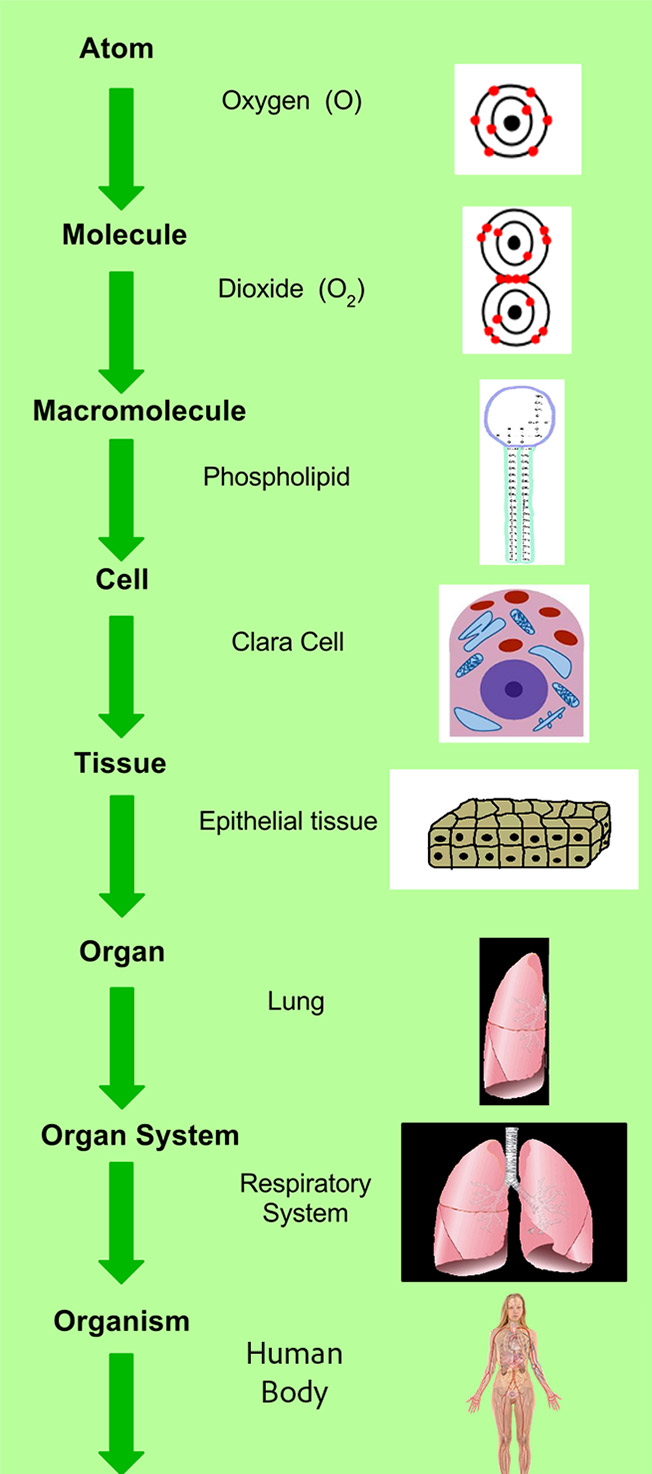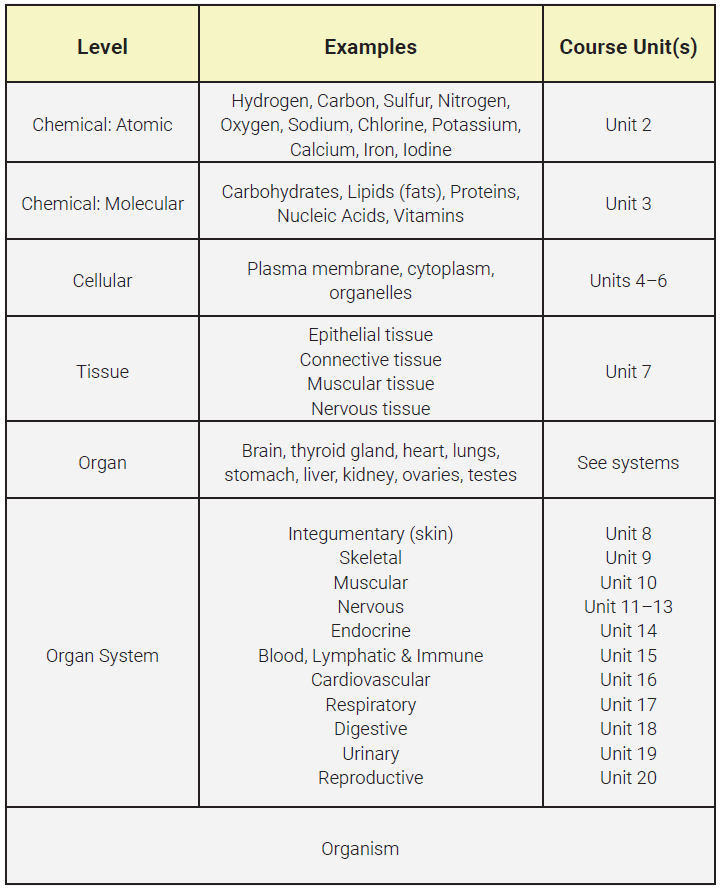Levels of Organization
Objective 1.2
1.2.1 Identify and give an example of each level of organization of the human body.
1.2.2 Arrange the levels in the correct order, from smallest to largest.
Levels of Organization
The subdivisions of anatomy reflect the different levels of organization of the human body. The smallest level of organization is the chemical level; the largest is the entire body (organism).
- Smallest
- Chemical Atomic
- Molecular
- Cellular
- Tissue
- Organ
- System
- Organism
- Largest
The chemical level of organization consists of the atoms and molecules of the human body. For example, there are gases dissolved in the blood, so those dissolved gases (oxygen, carbon dioxide, nitrogen) are part of the chemical level. Molecules such as deoxyribonucleic acid (DNA), ribonucleic acid (RNA) and proteins carry out essential functions at a microscopic level.

All living things are made up of cells. There are many different types of cells, but they all have three things in common: 1) they are surrounded by a fatty two-part layer (lipid bilayer) called the plasma membrane; 2) the lipid bilayer surrounds a complex chemical “soup” called the cytoplasm, where essential cell functions are carried out; 3) they have a control center or information repository called a nucleus where instructions encoded in nucleic acids (DNA and RNA) are stored and manipulated.
Cells gather together in groups for the third level of organization, the tissue. A tissue is made up of cells of a certain type. For example, connective tissue holds the structure of the body; nervous tissue collects, uses, and sends out information.
An organ is a collection of tissues that perform a function needed for the human body to survive. For example, the kidney is an organ which filters and removes wastes from the blood to make urine.
A system is a group of organs which carry out a more complete set of functions. After being created by the kidney, urine moves through a pair of tubes called the ureters and is stored by the urinary bladder until it is expelled from the body through another tube called the urethra. Together, the kidneys, ureters, bladder and urethra make up the urinary system.
The 11 body systems work together to form the organism, the human body.
Our course outline follows the levels of organization. Units 2-6 are focused on the atomic and cellular levels of organization. Unit 7 will cover tissues. Units 8-20 focus on the individual body systems.

Media Attributions
- U01-008x Levels of Org Adapted © Mikala14 adapted by Justin Burr is licensed under a CC BY-SA (Attribution ShareAlike) license
- U01-009 levels of organization by unit number table © Bizell, Lizz is licensed under a CC BY-SA (Attribution ShareAlike) license

